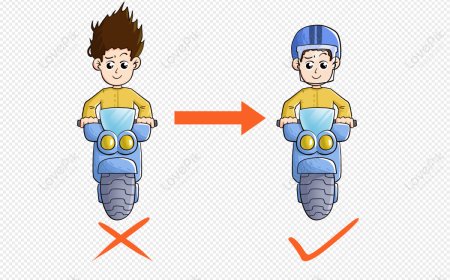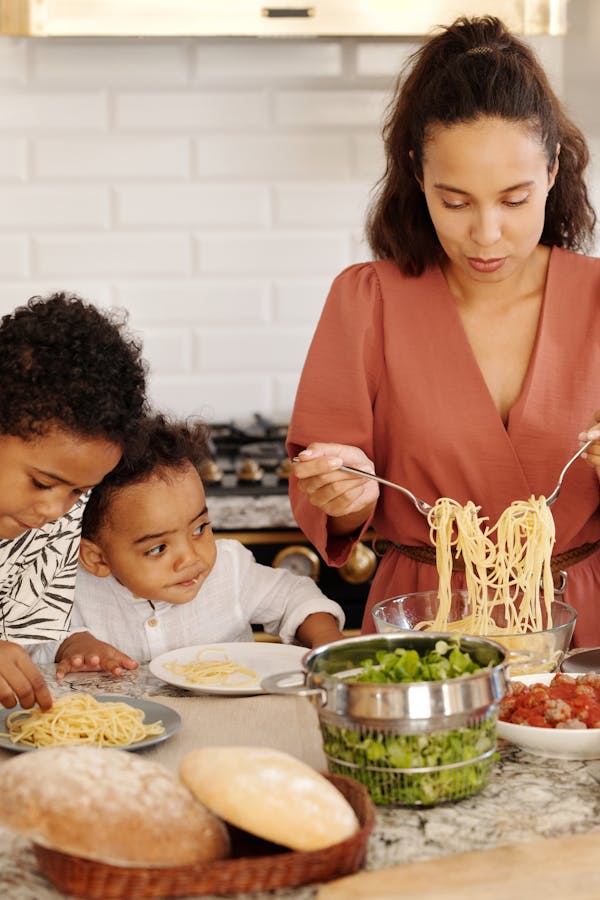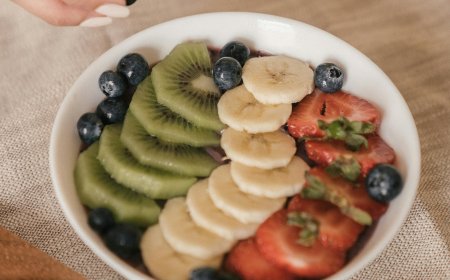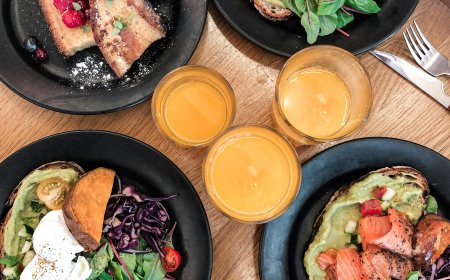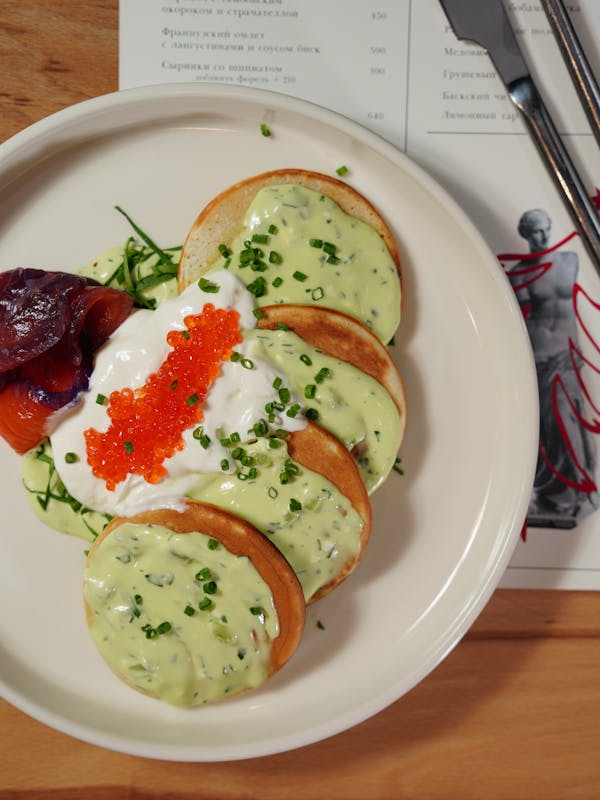Emotional Eating And How To Break The Pattern
Is emotional eating preventing you from losing weight? Does it keep you from feeling like your most energetic, healthy self? And most importantly, does it cause you to feel guilt or shame that eventually starts the cycle all over again? If so, you’re not alone. What Is Emotional Eating? Emotional eating is a form of […]

Is emotional eating preventing you from losing weight? Does it keep you from feeling like your most energetic, healthy self? And most importantly, does it cause you to feel guilt or shame that eventually starts the cycle all over again?
If so, you’re not alone.
What Is Emotional Eating?
Emotional eating is a form of disordered eating that involves consuming large quantities of food—usually comfort or junk foods—to cope with difficult emotions.
It is a highly common cycle that most people have fallen into at some point in their lives.
The good news is this: there are ways to break the cycle of emotional eating and heal both your physical and mental health.
Why Do We Emotional Eat?

Firstly, it’s important to understand why we eat emotionally. We eat emotionally because food has a true physiological effect on our mood—whether it’s a temporary blood-sugar increase from carbs or a spike in serotonin thanks to chocolate or sweets.
Not only that, but many of us are taught as children that sweets or treats are “rewards” for good behavior.
We eat emotionally because it’s a maladaptive coping mechanism for getting what we really want: love, security, or comfort.
While some people struggle with emotional eating during specific circumstances—maybe a stressful week at work, a frustrating meeting, or a bad breakup—others spend years of their life battling the constant urge to heal deep, long-lasting emotional wounds with food.
Empowerment coach for girls and women, Frannie Foltz, knows firsthand how the cycle of emotional eating can impact your life. “For years, emotional eating held me captive,” says Foltz. “My childhood was riddled with abuse; as a result, fear, shame, and loneliness lead me to seek comfort in food. Food was reliable, readily available, and a legal drug of choice to numb my pain. And I was the one in control of how much I ate, when, and where. By 21, I tipped the scales at 294lbs”
Breaking The Pattern of Emotional Eating
While many people think the cycle of emotional eating can be broken by just willing themselves to stop reaching for junk food, it’s important to understand that the root cause is, by definition, emotional.
Foltz, for example, tried to deal with her emotional eating by making dietary changes after college. She cut portions in half, reduced carbs after 4 pm, and drank water instead of diet soda.
But she says the real shifts that helped break the cycle eventually occurred in her mind.”I realized that after a stressful day at work or being rejected by a guy, I was still resorting to binging. My habits were changing, but I was still allowing my emotions to reign—so much so that I’d take cake from the garbage can and make a box of brownies just to eat the entire batch.”

Foltz says it took an emotional and spiritual journey for her to break the cycle and lose weight—120 pounds, to be exact—which she has kept off for nearly two decades.
“I finally began recognizing the pattern that when my emotions were triggered, my self-destructive eating patterns kicked into high gear. In time, I identified fear as the common emotion of all of my triggers—I was afraid of love because I had been hurt in the past, so I even feared loving myself. My body was heavy because my heart was heavy.”
With this awareness, Foltz created practices to combat her bouts of emotional eating when fear reared its ugly head.
“When negative thoughts entered my mind, I began replacing these destructive thoughts with positive, constructive thoughts so that my body would take the signals from my mind. Instead of thinking, ‘I need a Snickers now!’ I trained my brain to ask, ‘How is a Snickers bar going to make you less afraid?'”
In essence, Foltz learned a valuable lesson: you can’t deal with the physical weight until you deal with the emotional weight.
But how do you even begin to deal with the emotions at the root of the problem?
7 Ways To Stop Emotional Eating

- Asses Your Emotional State. Before you open the fridge, asses your emotional state. Whenever you reach for junk or comfort foods, take a five second pause and ask yourself: “How am I feeling?” If you feel stressed, angry, bored, lonely, or low, give yourself a moment to pause. Write down three healthy ways you can make yourself feel better, and do one of those things before you eat. This helps break the pattern of (even subconsciously) numbing your pain with food.
- Identify What Triggers Your Binge. Once you’ve realized that you may be using food to cope with a specific emotion, identify the event or events that trigger the emotion. It could be something from that day, or even a deep wound from childhood. This helps you be aware and then prepare you for when you may be confronted with the trigger again. For Foltz, holidays were a major trigger she identified. “At every holiday fathering, my great aunt Mary would ask, ‘Why aren’t you married yet? What are you doing wrong?’ Knowing I was going to see her at the next holiday allowed me to prepare mentally and even script a response beforehand.”
- Find A Supportive Tribe. Surround yourself with friends who like to be active and who can support you when you have “one of those days.” Call a friend and ask her to join you for a walk, a barre class or anything where you can engage with one another and find comfort in a healthy way instead of reaching for the chips.
- Create A Daily Mantra. Foltz suggests creating a mantra you repeat daily, not just when triggered. “Wallpaper your world with it. Post-it to your makeup mirror, save it as a screensaver on your phone, write a note card and clip it to your sun visor in your car. You will begin to believe your affirmation, which will manifest into living it.”
- Have Healthy Comforts On Hand. Usually, emotional eating occurs when we are seeking comfort, love, or security. Go back to #1 and look at the list of your “healthy comforts.” Make that list longer, and go back to it whenever you are tempted to eat emotionally. The list can include things as simple as taking a hot bubble bath by yourself or journaling—or maybe it’s calling a friend or making a therapy appointment. Taking care of yourself is all about identifying how you can get your needs met in healthy ways. View these methods of self-care as ways to nurture and comfort yourself without food.
- Don’t Keep Binge Foods In The House. It sounds simple, but if there are food items you’re more likely to binge on when emotional eating (potato chips, cake, cookies, etc) then do not buy them or keep them in your house.
- Find A Change of Scenery After Eating. Emotional eating can often occur at night after dinner, when we can’t quite satiate what’s bothering us. So after dinner, pop in a piece of bubblegum and make it a point to walk out of the kitchen. Leaving the room will help change your mindset, and it gives you the opportunity to find something else to do.
When you become more aware of the emotions behind your excessive or uncontrolled eating binges, you can start to break the cycle of shame and overeating. “The two most common emotions that drive decisions are love and fear,” Foltz reflects. “Give yourself permission to choose love and you will experience peace and smaller jeans, too!”
You can read more about Frannie Foltz’s journey on shinewithfrannie.com
What's Your Reaction?
























